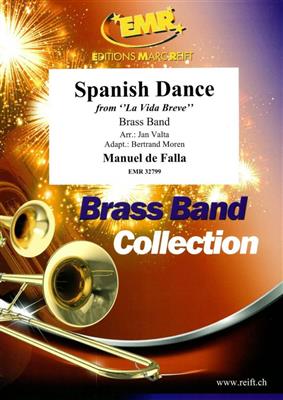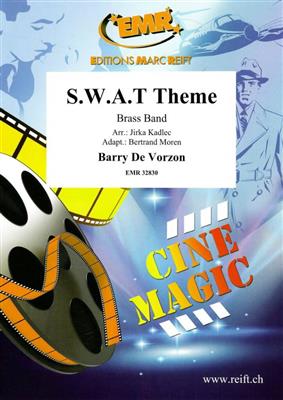Results
-
 £92.00
£92.00Ritual Fire Dance - Manuel de Falla - John Glenesk Mortimer
Estimated dispatch 5-14 working days
-
 £68.00
£68.00Spanish Dance - Manuel de Falla - Jan Valta
Estimated dispatch 5-14 working days
-
 £71.30
£71.30S.W.A.T Theme - Barry de Vorzon - Jirka Kadlec
Estimated dispatch 5-14 working days
-
 £108.10
£108.10Gipsy Airs (Trombone Solo) - Pablo de Sarasate
Estimated dispatch 5-14 working days
-
 £92.00
£92.00Come Back To Sorrento - Ernesto de Curtis - Suba
Estimated dispatch 5-14 working days
-
 £94.99
£94.99Concert Piece - Alexandre Guilmant - Klaas van der Woude
Felix-Alexandre Guilmant-Amedee (Boulogne-sur-Mer, March 12, 1837 - Meudon, March 29, 1911) was a French composer and organist. Like many other composers, he was very talented on a young age, he was 12 years when he was playing organ smoothly. He studied with Lemmens with Charles-Marie Widor and Gigout. Between 1871 and 1901 he the leading man in the Paris organ scenery, along with his fellow students, later on he teached at the Paris Conservatoire National Superieur de Musique, inter alia, Joseph Bonnet and Marcel Dupre. Known are his organ sonatas, which are equivalent to the famous organ symphonies of Widor. His work was very popular. Also knownunder the title Morceau Symphonique, Opus 88.
Estimated dispatch 5-14 working days
-
 £60.99
£60.99The Call of the Shepherd - Edvard Grieg - John Brakstad
A warm, romantic "pastorale", very suitable as calm interlude in your program. John Brastad, band master of the Bergen Salvation Army Band ((Norway) made the arrangement for brass band. Een warme, romantische 'pastorale', zeer geschikt als rustpunt in uw programma. John Brakstad, bandmaster van de Bergen Salvation Army Band ((Noorwegen)maakte het arrangement voor brassband.
Estimated dispatch 5-14 working days
-
 £69.99
£69.99Meeting - Edvard Grieg - Tom Brevik
A lyrical piece, from Edvard Grieg's song-cycle "Haugtussa" ( The Mountain Maid) originally for voice and piano, but here in an arrangement for Soprano Cornet and Brassband by Tom Brevik Een lyrische werk van Edvard Grieg uit de liederencyclus ""Haugtussa"" (The Mountain Maid),oorspronkelijk voor stem en piano, maar hier in een arrangement voor Es Cornet en Brassband van Tom Brevik.
Estimated dispatch 5-14 working days
-
 £76.99
£76.99New Waves - Torstein Aagaard-Nilsen
New Waves is a special composition. Although contemporary but still attractive to musicians and listeners. Norwegian composer Aagaard-Nilsen has failed in a special way to add new elements to the contemporary wind music. Original exciting rhythms and contrasting harmonies make this composition enjoyable and challenging together. Interrupted by a slow middle section New Waves may be seen as five minutes jazz, rock and funk optima forma! New Waves is een bijzondere compositie. Weliswaar eigentijds maar toch aantrekkelijk voor muzikanten en luisteraars. De Noorse componist Aagaard-Nilsen is er op bijzondere wijze in geslaagd nieuwe elementen toe te voegen aan dehedendaagse blaasmuziek. Oorspronkelijke ritmes en spannende contrastrijke samenklanken maken het spelen van dit werk plezierig en uitdagend tegelijk. Onderbroken door een langzaam middendeel kan New Waves beschouwd worden als vijf minuten jazz, rock en funk optima forma!
Estimated dispatch 5-14 working days
-
£76.99
Now to God our King - Sijtze van der Hoek
An arrangement of a religious song (Psalm 81) always stirs the imagination, especially when sounding as intimate, atmospheric and harmoniously as in Now to God our King. Een bewerking van een geestelijk lied (Psalm 81) spreekt altijd tot de verbeelding. Zeker als het zo intiem en sfeervol, maar ook zo welluidend en majestueus klinkt als in Now to God our King.
Estimated dispatch 5-14 working days
